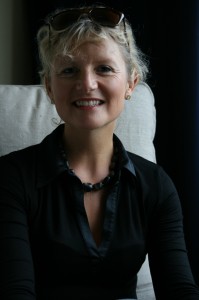Interview: Nicola Bedlington, chairperson of the ESR’s Patient Advisory Group for Medical Imaging (PAGMI)
Nicola Bedlington is executive director of the European Patients’ Forum (EPF) and chairperson of the ESR’s Patient Advisory Group for Medical Imaging (PAGMI). The goal of PAGMI is to bring together patients, the public and imaging professionals in order to positively influence advances in the field of medical imaging to the benefit of European patients. The group has contributed to the International Day of Radiology, which aims to raise public awareness of the benefits of medical imaging and has promoted the ESR’s patient information website. We asked Ms. Bedlington for her views on healthcare in the EU and why she chose to participate in the International Day of Radiology.
What is the overall aim of your organisation?
Nicola Bedlington: Our vision is high quality, patient-centred and equitable healthcare for all patients throughout the European Union. The European Patients’ Forum is an umbrella organisation that works with patient groups in public health and health advocacy across Europe. Our members represent specific chronic disease groups at EU level, or are national coalitions of patients. We currently represent almost 60 such organisations. Our mission is to be the collective patients’ voice at EU level, manifesting the solidarity, power and unity of the EU patients’ movement, and to provide a strong and united voice in order to put patients at the centre of EU health policy and programmes. In this regard we are the key interlocutor with EU institutions on cross-cutting issues affecting all patients.

Nicola Bedlington is executive director of the European Patients’ Forum, having joined the organisation in 2006, and chairperson of the ESR Patient Advisory Group for Medical Imaging.
Nicola Bedlington: The EPF helps to empower patient organisations through educational seminars, policy initiatives and projects. We coordinate best practice exchanges between patient organisations at European and national levels. Our programmes also help to strengthen organisational and advocacy capacity.
Your organisation has experience working with various chronic disease groups. Do many patients suffer from chronic diseases in the EU?
Nicola Bedlington: Following consultation with our members we estimate there are at least 150 million patients with chronic conditions across the European Union. This figure is likely to increase given the ageing population.
Many EU countries face significant health budget cuts, leading to shorter hospital stays and less access to modern equipment (i.e. long waiting lists for MRI exams). How can better patient care be promoted?
Nicola Bedlington: The EPF is working with its member organisations to ensure health is seen as an investment, and patients are not perceived as purely cost drivers. Major health inequalities exist across the EU which impact enormously on patient access to care. Building on the three pillars of quality information, health literacy and empowerment, patients can be agents of change and sources of innovation, particularly in terms of equity and sustainability of care. There need to be meaningful opportunities for patient involvement throughout the healthcare sector. We promote meaningful patient involvement in all forms of innovation, whether it is in high or low technology, pharmaceuticals, information technology, social change or systems change. The patient community seeks partnerships with researchers, policy-makers and industry in order to achieve greater impact in this arena.
Do you think most patients in the EU are well-informed about disease management? For instance, do they know about the latest available treatment options?
Nicola Bedlington: This varies across the European Union, but access to quality information about treatment options and health literacy, more generally, are core aspects of our work. There is a vast disparity in access to information on, for instance, research and development in medicine, and the EPF is addressing this through projects such as the European patients’ academy on therapeutic innovation.
Can you tell us about your background in patient advocacy and how you first become involved?
I started my career working for the deaf community, running their European organisation and fighting for issues such as official recognition for sign languages across the EU. I then went on to work for the European Commission on disability policy and NGO relations, and was the founding director of the European Disability Forum, where I worked on human rights and non- discrimination. Many of my member organisations were also working on health issues, and I became more and more interested in patient rights and patient advocacy. I joined the EPF as its first director in 2006.
How was PAGMI established and what does the EPF hope will be gained from the cooperation?
PAGMI was established to ensure that the ESR listens to the patients at all levels of governance and in its interactions with its members. The EPF sees its relationship with ESR as a potential model for real partnership between the patient community and medical societies that are non-disease specific. We are able to collaborate on common policy issues, and concerns, such as patient safety in medical imaging. Promoting a patient-centred model of care among radiologists is another shared objective that we are pursuing through the Audit and Standards Committee.


